In Conclusion: Fable 3
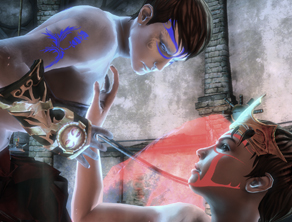 We were quite looking forward to Fable 3, a light RPG/adventure game developed by Lionhead, and were greatly disappointed when the PC version was delayed. Not having played Fable 2 until it had been out for two years but enjoying it extremely, we waited patiently for any information on the PC release date. And waited. And waited some more. I started to wonder if Lionhead was just going to skip the port and start working on the next Fable game. Seven months later, we finally got a date and it ended up being a day one purchase.
We were quite looking forward to Fable 3, a light RPG/adventure game developed by Lionhead, and were greatly disappointed when the PC version was delayed. Not having played Fable 2 until it had been out for two years but enjoying it extremely, we waited patiently for any information on the PC release date. And waited. And waited some more. I started to wonder if Lionhead was just going to skip the port and start working on the next Fable game. Seven months later, we finally got a date and it ended up being a day one purchase.
Visually, Fable 3 is absolutely gorgeous. From the environments to characters, it’s clear that much time was spent on the aesthetics of the world, using a careful balance of lighting and color palettes. Textures, animations, shadows, etc., were rendered in very high quality, pushing even the limits of a new, 500-series Nvidia card.

Storywise, the game was enjoyable, but not as good as Fable 2. That being said, Fable 3 was more fun and we played through twice while having had no desire to play through Fable 2 again.
Buying real estate returns from Fable 2, though gold has more purpose being a main plot point. Jobs, much like in Fable 2, and pawnbrokers, a new feature, are the other means of making gold but no where as lucrative.
The Sanctuary replaces a traditional menu system; instead of bringing up the menu, the ESC button teleports the main character there. The main room with a world map connects to others, with weapons, clothing, achievements, trophies and a treasury (potentially with huge pile of gold, à la Scrooge McDuck).

The Sanctuary works best with the wardrobe: different clothing sets on mannequins allows someone like me, who loves costuming, much freedom. It even has three custom saves for a quick change.
The Santuary works moderately well with weapons, lacking the ability to reorder and only four melee and ranged displayed at a time.
Where the Sanctuary truly fails is the map system. A throughback to old Bullfrog/Lionhead games, Albion is depicted by tabletop miniature towns in which details can be seen through the use of a magnifying glass. The setup is more aesthetically pleasing than functional though, as moving about is touchy and cumbersome; zooming into towns or buildings takes up to five seconds; and worst of all, map details are very inaccurate.
The game is a port, but not a terrible one. Press-and-hold mechanics, which should stay in consoles, make up a large part of character interaction. The underscore, equal, and square bracket keys are used to navigate through sets of weapons, clothing, tattoos, etc. The number keys, scroll wheel, and mouse clicks are also used for more detailed changes, an awkward combination to say the least.
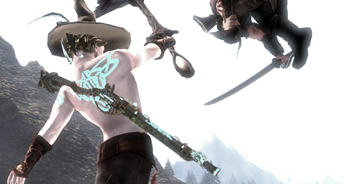 The new “hardcore” difficulty is a nice addition to the Fable series, as it has always been too easy – though there is fun in that too. The difficulty is not so much hardcore as it is “harder,” meaning the character puts out less damage while enemies have more health and do more damage. Often, this requires the use of multiple potions during each fight to avoid being knocked down.
The new “hardcore” difficulty is a nice addition to the Fable series, as it has always been too easy – though there is fun in that too. The difficulty is not so much hardcore as it is “harder,” meaning the character puts out less damage while enemies have more health and do more damage. Often, this requires the use of multiple potions during each fight to avoid being knocked down.
General rebalancing was also done to the port so that spamming a single attack could not win a battle. Enemies block after the first couple of hits, requiring changing targets often during a fight.
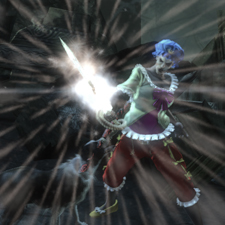 Upgrading weapons is a new mechanic that surprised me. With the exception of the starting Hero weapons, all weapons in the game are named and unique. They have three upgrades, ranging from adding more damage to earning more guild seals from combat.
Upgrading weapons is a new mechanic that surprised me. With the exception of the starting Hero weapons, all weapons in the game are named and unique. They have three upgrades, ranging from adding more damage to earning more guild seals from combat.
Getting those upgrades, for me, was the most enjoyable aspect. Some require killing a certain creature 200 times, while others unlock after an orgy with four people. I was constantly switching out weapons making sure that I was always working towards an upgrade.
I enjoyed finding the collectibles more so than in Fable 2. There are books that tell an interesting snippet of backstory, insulting gnomes instead of gargoyles, and keys to chests with the occasional Legendary weapon.
Co-op is much improved, with the visiting character being able trade unique items, keep drops, and earn free gold. Trading is especially useful, as some of the achievements require collecting outfits and weapons that do not exist in a world.
Problems persist though: only the host will receive credit for a quest even if both players complete it.
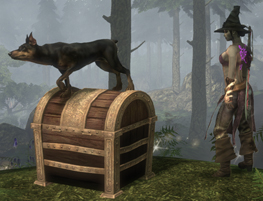 Bugs, as usual, are the largest annoyance. Besides the rare floating villager or the glitched out dog, there are co-op bugs that make it difficult to trade or map to a location together. Upon game completion, both of us have framerate stutter when loading into a new area.
Bugs, as usual, are the largest annoyance. Besides the rare floating villager or the glitched out dog, there are co-op bugs that make it difficult to trade or map to a location together. Upon game completion, both of us have framerate stutter when loading into a new area.
While irritating, those are not nearly as bad as some of the bugs which start after DLC installation. One of the worst is a spell effect that crashes the game to desktop. Another is an odd framerate drop that can be temporarily fixed by tabbing out and in, but it recurs every couple of minutes. Certain achievements are reset, as well.
Browsing through forums, I’ve found that these bugs are not isolated events and I recommend avoiding the Traitor’s Keep DLC as they can render the entire game unplayable.
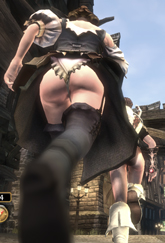 Making friends is more time consuming in Fable 3, with dates and item retrieval having to be repeated at each step of the relationship. Since friendships are required to upgrade certain weapons and I had multiple weapons with that requirement, I quickly found that making friends is not fun.
Making friends is more time consuming in Fable 3, with dates and item retrieval having to be repeated at each step of the relationship. Since friendships are required to upgrade certain weapons and I had multiple weapons with that requirement, I quickly found that making friends is not fun.
There are some other annoyances worth mentioning: miscellaneous inventory items can only be viewed by going to a pawnbroker, only one type of food can be carried at a time, there is no option to buy or set the rent rate of all the real estate in a town.
As much as I looked forward to Fable 3, it still exceeded my expectations by far. The only thing that keeps it from being one of my favorite games of all time is the bugs, which is to be expected by now in a Fable title. Peter Molyneux always promises big and delivers short but he ended up a little closer this time.
PS: Not looking forward to the rail shooter, Fable 4.



No Comments Yet.